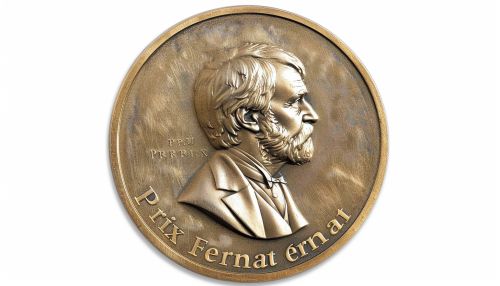Fermat Prize
Overview
The Fermat Prize is a prestigious award given by the Institut de Mathématiques de Toulouse (IMT) for research in the area of pure mathematics. Named after the French mathematician Pierre de Fermat, the prize is awarded every two years to one or multiple mathematicians under the age of 45 who have made significant contributions to mathematical research areas where the influence of Pierre de Fermat's work is felt.


History
The Fermat Prize was established in 1989 by the IMT in Toulouse, France. The institute, which is dedicated to the study and advancement of mathematics, named the prize in honor of Pierre de Fermat, who was born in the nearby city of Beaumont-de-Lomagne. Fermat, who lived in the 17th century, is best known for his work in number theory, particularly for Fermat's Last Theorem, which remained unproven for over 350 years until it was finally solved by Andrew Wiles in 1994.
Eligibility and Selection Process
The Fermat Prize is awarded to mathematicians under the age of 45 who have made significant contributions to areas of mathematics where Fermat's work has had a major influence. These areas include, but are not limited to, number theory, geometry, probability theory, and the theory of analytic functions. The prize is not restricted to French mathematicians; it is open to researchers from all over the world.
The selection process for the Fermat Prize is rigorous and highly competitive. Candidates are nominated by their peers, and the nominations are then reviewed by a selection committee composed of prominent mathematicians. The committee evaluates the candidates based on the originality, quality, and impact of their research. The winner, or winners, are then chosen by a vote of the committee members.
Prize
The winner of the Fermat Prize receives a gold medal and a cash award. The amount of the cash award varies, but it is typically in the range of €20,000 to €30,000. In addition to the monetary award, the winner is invited to give a lecture at the IMT in Toulouse, where they are formally presented with the prize.
Notable Laureates
Over the years, the Fermat Prize has been awarded to many distinguished mathematicians. Some notable laureates include:
- Terence Tao (2006): An Australian mathematician known for his work in harmonic analysis, combinatorics, partial differential equations, and representation theory.
- Ngô Bảo Châu (2009): A Vietnamese mathematician recognized for his proof of the Fundamental Lemma in the theory of automorphic forms.
- Cédric Villani (2010): A French mathematician awarded for his work on optimal transport and its applications to differential geometry and probability.
Impact
The Fermat Prize has played a significant role in recognizing and promoting outstanding mathematical research. It has helped to highlight the work of young mathematicians and has often served as a precursor to other major awards, such as the Fields Medal and the Abel Prize. The prize has also contributed to the visibility and prestige of the IMT and has helped to solidify Toulouse's reputation as a center for mathematical research.
